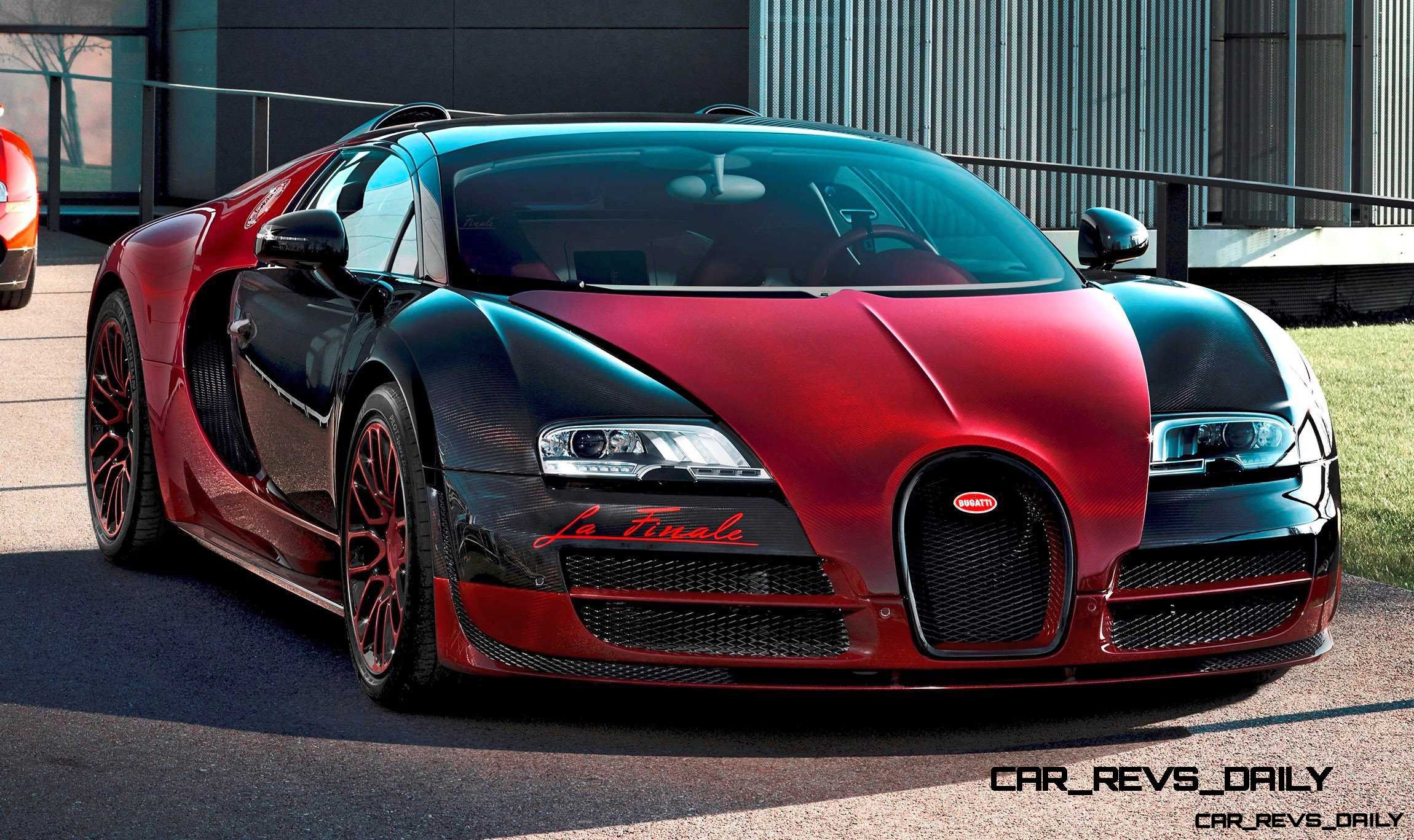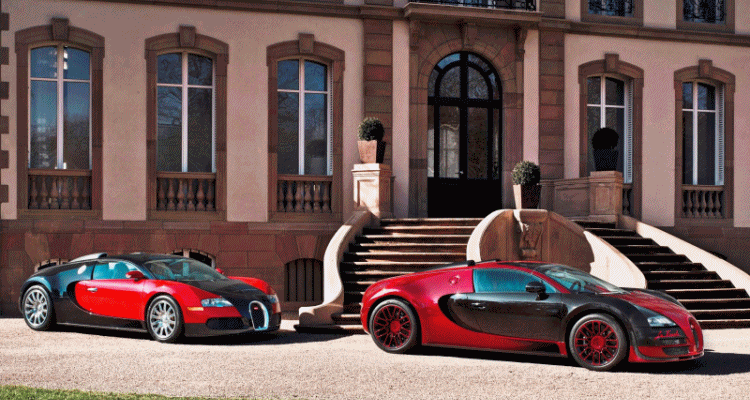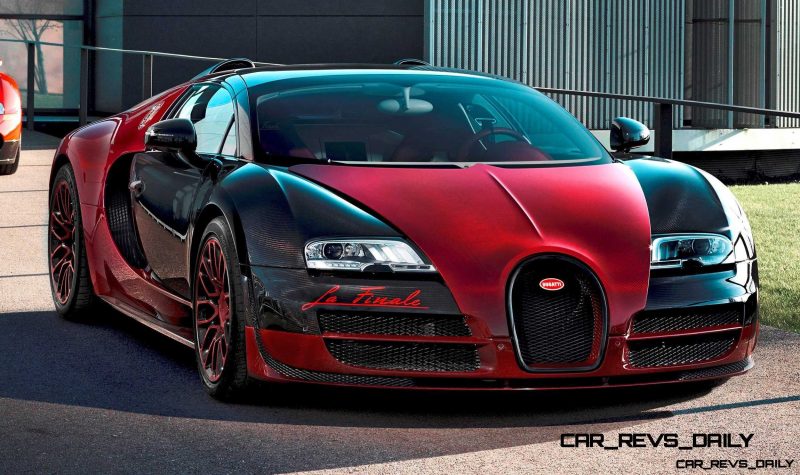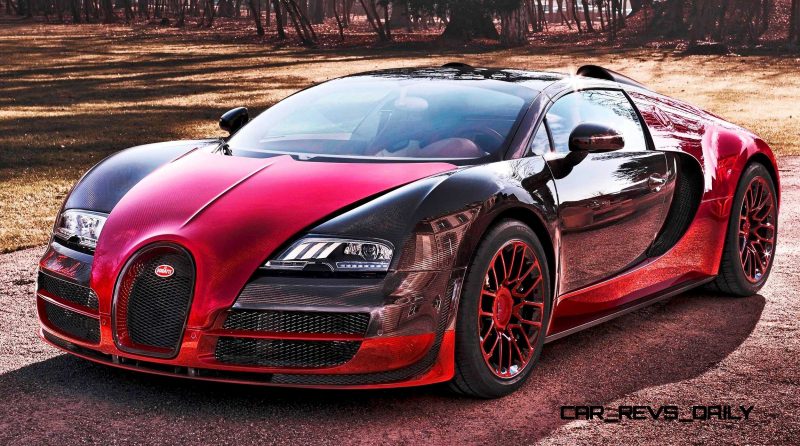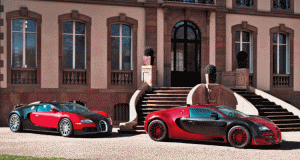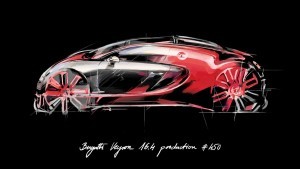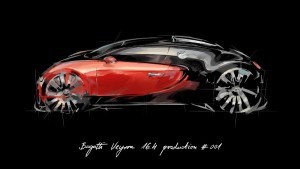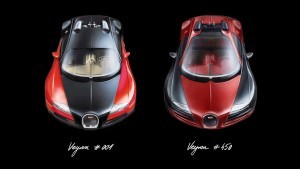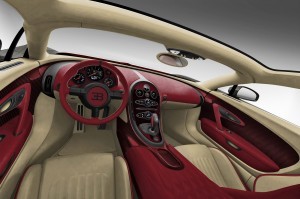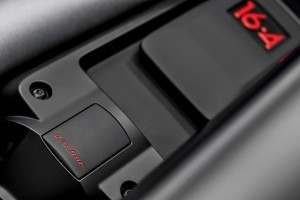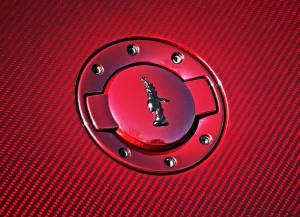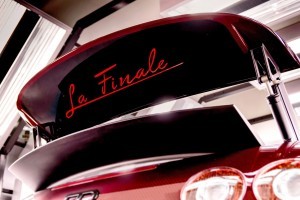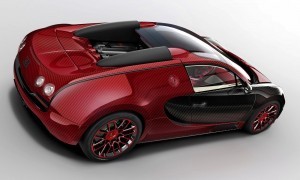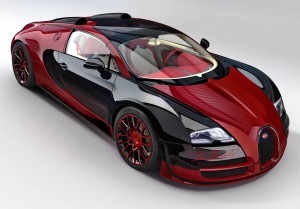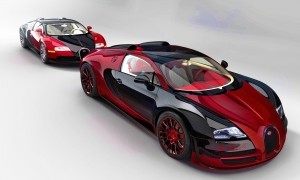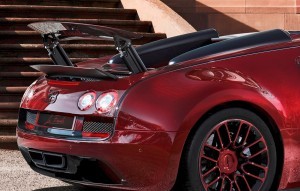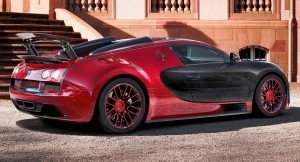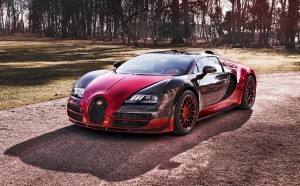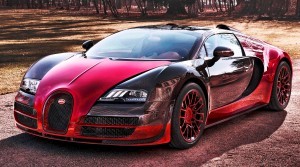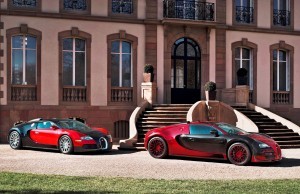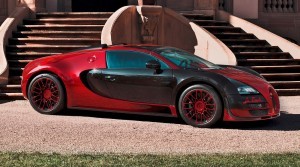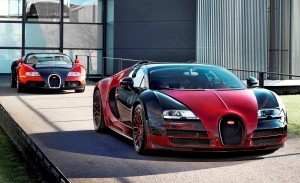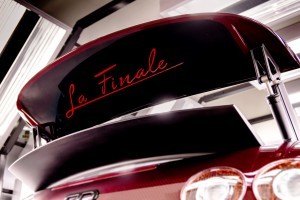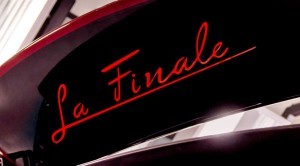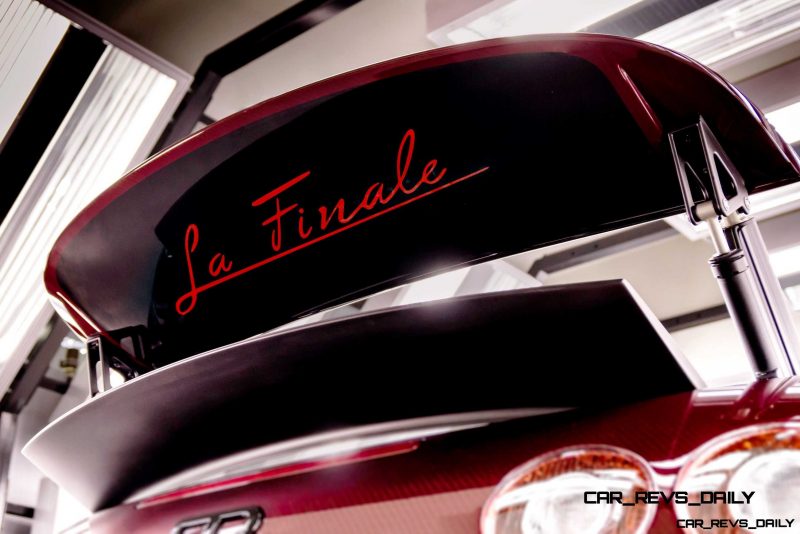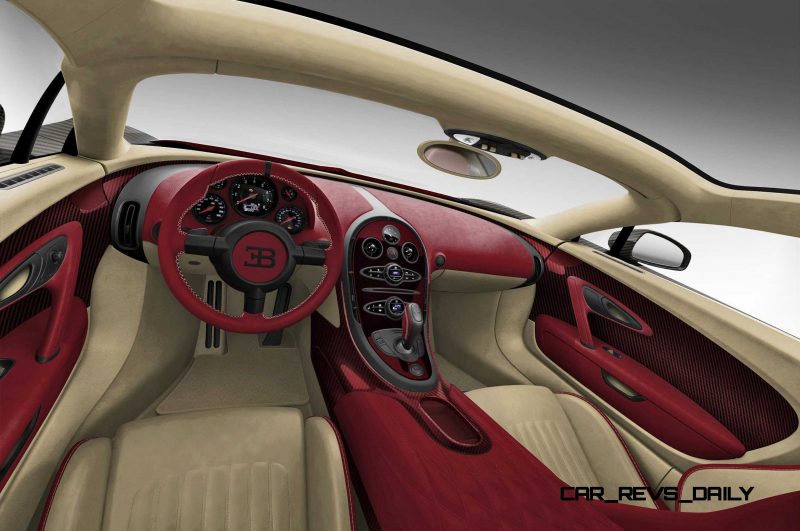 Who could ask for a more hardcore record-smasher than the Bugatti Veyron!
Who could ask for a more hardcore record-smasher than the Bugatti Veyron!
A car so intense with its focus on ultimate performance, most engineering and management teams would have abandoned the folly hundreds of times. Bugatti plugged forward. Where tires and wheels did not exist to handle the Veyron’s 250-mph planned top speed, Michelin custom-made the PAX run-flat system and vulcanized some special rubber that could stand the heat. Milled-from-solid alloy wheels to fit these special shoes – with the PAX lip integrated therein.
The same scenario played out with the glass, the heat, the aero, the price, the cabin and the every other detail.
And then, to top it all off, these fantastically clever solutions all had to go back through the Volkswagen Group reliability, durability and use-ability testing process.
After all, the Veyron must do it all. Legal on every road worldwide, and drive-able by anyone — and their grandmother.
Can you imagine the headaches, the meetings and the shattered group-think that had to occur to get the Veyron made at all, in any numbers?
It would take a ferocious vision to deliver, and deep pockets to back up the ten years of R&D already invested before the first Veyron rolled out in 2005.
In most ways, the Veyron is the ultimate crowning achievement of Ferdinand Piech, VW Group empresario and board-room godfather.
He pushed the teams to deliver incredible, otherworldly performance — which the La Finale 450th model exemplifies in GS Vitesse style — and rewarded breaking conventional limits.
Making the Veyron at all is a huge accomplishment. But making it within (one of…) the most structured and rigid management systems of any company, ever?
The Veyron La Finale is nothing short of a true miracle.
THE FINANCIALS
Sure, selling 450 Veyrons at an average price of $2.5-million earned the company roughly $1-billion in revenue. This bonus money is funding the next chapter of Bugatti excellence as we speak.
But if you think more broadly about the estimated $11-billion Bugatti has cost the VW Group since the late 1990s (including sales, marketing, customer relationship management, etc)… every Veyron is a red-letter bargain. By this math, if Bugatti passed all its costs onto owners…. the price of the Veyron would be $25-million. Each.
In the grand scheme of things — excluding performance and prestige — every Veyron owner should congratulate him or herself on the amazing value their Bugatti represents. A 90-percent discount on the ‘actual retail value!’
THE PAYOFF
The payoff for the Bugatti program is that Bugatti is back in consumer hearts, atop all other supercars and hypercars by most metrics. The payoff is also in value to other VW luxury brands, which can leverage the technical innovations from the Veyron in other cars.
But the real payoff of the program?
Learning how to use the VW Group’s strengths to create a luxury hypercar… within the VW Group.
We mean it with true reverence when we say: the Bugatti Veyron is the best supercar the world has ever known.
Until the next Bugatti king-maker comes along, that is….!
2015 Bugatti VEYRON Grand Sport Vitesse La Finale
BUGATTI
Geneva International Motor Show 2015: Bugatti celebrates the Veyron
World première of the 450th and final Veyron, the Grand Sport Vitesse “La Finale”
— Bugatti President Wolfgang Dürheimer: “As the most powerful and fastest
production supercar in the world, the Veyron is the benchmark”
— All 450 Veyrons have been sold, marking an important milestone for
Bugatti
— The first and 450th Veyron will be on display together at the Geneva
International Motor Show
Molsheim/Geneva, 2 March 2015. The curtain rises on an icon! At the Geneva
International Motor Show, Bugatti is celebrating the Veyron, the fastest production
supercar in the world whose performance has captivated legions of fans around the
world since its launch ten years ago. The Veyron is limited to 450 units, which have now
all been sold. The world première of the final Veyron in Geneva will mark the culmination
of an unprecedented chapter in automotive history. Bugatti will showcase the Veyron
16.4 Grand Sport Vitesse “La Finale” with chassis number 450 alongside chassis number
one of the Veyron 16.4 which rolled out of the company’s factory in Molsheim ten years
ago and heralded the start of the Veyron’s success story.
“The Bugatti Veyron has shown that our engineers are capable of achieving a previously
unimagined level of technical excellence, thereby opening up whole new dimensions in the
automotive sector,” says Wolfgang Dürheimer, President of Bugatti Automobiles S.A.S. “The
Veyron is justifiably at the head of the field.”
“As the most powerful and fastest production supercar in the world, the Veyron is a true
benchmark,” continues Dürheimer. “With a world record speed of 431.072 km/h, it has become
an icon of longitudinal dynamics.”
The development of the Bugatti Veyron represented one of the greatest technical and
engineering challenges ever overcome in the automotive history. At the time, Bugatti
developers were faced with four key specifications: the car had to transfer more than 1,000 PS
onto the road, achieve a top speed in excess of 400 km/h, accelerate from 0 to 100 km/h in less
than three seconds and – the biggest challenge of all – still be suitable for ‘driving to the opera’
in comfort and style.
In addition to its stunning performance, it is this everyday practicality and suitability for
comfortable, luxurious travel which makes the Veyron so unique, and which sets it apart from
all other supercars and hyper cars on the market.
This combination has proven to be a recipe for success. All of the planned 450 vehicles have
now been sold: 300 coupés and 150 open-top super sports cars.
“So far no other carmaker has managed to successfully market a product that stands for unique
top-class technical performance and pure luxury in a comparable price/volume range,” says
Wolfgang Dürheimer. “This is an incredible success for Bugatti.”
Not only is the Veyron the epitome of premium performance and speed, it is also a prime
example of timeless automotive design. The Veyron is an automotive piece of art featuring
unique lines that are heavily influenced by the traditional design DNA of the Bugatti brand.
“The Veyron is a showcase for technology, design and art – in keeping with the Bugatti brand’s
values of ’Art, Forme, Technique’”, Dürheimer says. Bugatti’s customers are as unique as its
vehicles. “The Veyron has created an entirely new customer base for an automotive brand.”
“Alongside the certainty of owning the world’s fastest production sports car with a high degree
of individual exclusivity, Bugatti customers appreciate that, by purchasing a Veyron, they
become part of the history of an automobile brand that is steeped in tradition,” says the Bugatti
President. “Many vehicles therefore find their way into private collections and are purchased as
an investment by automotive connoisseurs.”
When it came to equipping the 450 Veyron sports cars, Bugatti did everything to fulfil
customers’ wishes. For example, the body finish featuring clear-lacquered exposed carbon fibre
was particularly popular. Bugatti currently supplies this finish in eight colours – more than any
other manufacturer and in a quality that no other company can achieve. In addition, the French
luxury brand offers over 100 different colours for the painted finishes on the carbon fibre
bodies. The vehicles also feature a wide range of luxurious materials that were uncommon in
the automotive field, such as porcelain, crystal, special types of leather and wood, gold and
platinum. Each Bugatti configured by a customer is unique. Including options, the average price
of the vehicles recently sold is €2.3 million.
It goes without saying that Bugatti is already working on the sequel to its recent success story,
with development of its next model well underway. “With the next Bugatti model, we are aiming
to consolidate and expand the market-leading position we have established with the Veyron,”
the Bugatti President explains. “Our challenge is to make the best even better.”
The 450th Veyron: Grand Sport Vitesse “La Finale”
The last of the 450 Veyron supercars is the Veyron 16.4 Grand Sport Vitesse “La Finale”. It
draws its sheer force from a 1,200 PS, 8-litre, W16 engine which provides a breathtaking
maximum torque of 1,500 Nm. It sprints from zero to 100 km/h in just 2.6 seconds and can
achieve a top speed of 410 km/h.
The “La Finale” design is a modern homage to chassis number 1
“When designing the “La Finale”, the designers sought inspiration from the first Veyron in order
to provide a visual conclusion to the success story of this super sports car,” says Bugatti’s chief
designer Achim Anscheidt. “Although both vehicles have a black and red colour scheme,
chassis numbers one and 450 still have their own individual character which we have identified
visually. Ultimately, every Veyron is unique.” The owner of the Grand Sport Vitesse “La Finale”
also had a say in the design of the vehicle.
Première for red exposed carbon fibre
The design of the carbon bodywork of “La Finale” is based on chassis number one which was
designed ten years ago in the traditional Bugatti two-tone colour scheme, which was popular in
Bugatti models of the 1920s and 1930s. This striking design language remains inseparable
from the Veyron to this day. For the “La Finale”, the front wing panels, the doors and the areas
between the doors and the side air intakes, known as “medallions” in French, are made from
black exposed carbon fibre. The other parts of the outer shell are made from red exposed
carbon fibre, the first time this colour has ever been used on a vehicle. Including this new
colour, Bugatti now offers a total of eight different tints for exposed carbon fibre. The French
luxury brand is an industry leader in terms of not only the diversity of the colour schemes it
offers, but also in relation to the quality and processing of the exposed carbon fibre.
Unusually for a Veyron, the name of the Grand Sport Vitesse has been incorporated into the
outer shell. The “La Finale” lettering, which highlights the extra significance of this particular
super sports car, appears twice: once very clearly under the right front headlight and then in a
slightly concealed position on the underside of the rear wing. In both cases, the bright “Italian
Red” lettering is painted into the black exposed carbon fibre.
For the first time in a Veyron, the air scoops and intercooler cover have been painted black.
The EB logo and the relief “16.4” have also been emblazoned on it in Italian Red.
The wheel design is also in keeping with the red and black colour scheme.
It is worth mentioning the hubcaps that were milled from a single block of aluminium – another example of
the tremendous lengths that Bugatti goes to in the production of its vehicles. And that’s not all:
each hubcap features a relief of the famous Bugatti elephant that was created during the milling
process and then painted black. Rembrandt Bugatti, renowned sculptor and brother of
company founder Ettore, designed this figure which was later used as a radiator cap on the
Type 41 Royale and subsequently became a symbol of the brand. The elephant can also be
found on the red fuel tank cover and oil cap as a black anodised insert made from milled
aluminium.
An interior of strong, sophisticated contrasts
As with the exterior, the interior of the “La Finale” also pays tribute to the first Veyron. It was
upholstered entirely in leather in a light beige colour known as “Silk”. Leather also adds a
refined touch to the interior of the “La Finale”, where it features in the centre seat panels, the
footwell, the headliner, the cowling and the rear wall. Unlike chassis number one, the designers
and the customer have settled on contrasting colours for chassis number 450, selecting a
striking red tone known as “Hot Spur”. This red appears in the arm rests, the instrument panel,
the dashboard, the side bolsters and on the steering wheel rim, which is also decorated with
stitching in “Silk” beige.
Red exposed carbon fibre is also used in the interior: on the centre tunnel, on the inserts in the
centre console, on the door panels and seat shells.
The red head restraints are adorned with “La Finale” lettering embroidered in “Silk” colour. The
lettering is found again in “Italian Red” in the door sill strips, etched into the black exposed
carbon fibre.
The jewel in the interior is undoubtedly the Bugatti elephant on the stowage compartment cover
made from red exposed carbon fibre and located in the rear panel between the seats. The
elephant was cast in bronze with great technical skill, given a black patina, and then worked
into the cover as an insert. The lettering “450/450” has been painted in black under the bronze
cast.
The Geneva International Motor Show will be staged from 5 to 15 March 2015 at the Palexpo
exhibition centre in Geneva. The Bugatti exhibit is in hall 1.

Tom Burkart is the founder and managing editor of Car-Revs-Daily.com, an innovative and rapidly-expanding automotive news magazine.
He holds a Journalism JBA degree from the University of Wisconsin – Madison. Tom currently resides in Charleston, South Carolina with his two amazing dogs, Drake and Tank.
Mr. Burkart is available for all questions and concerns by email Tom(at)car-revs-daily.com.

